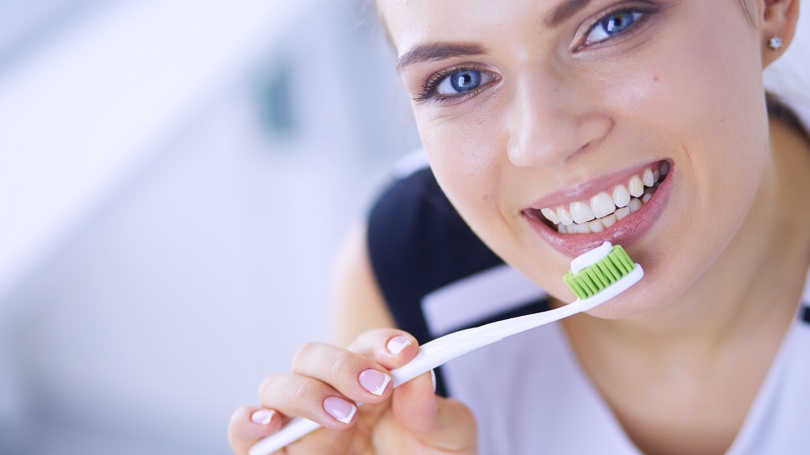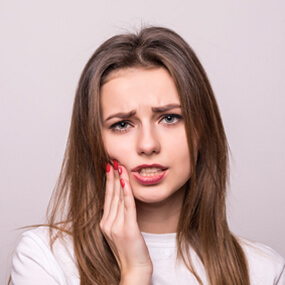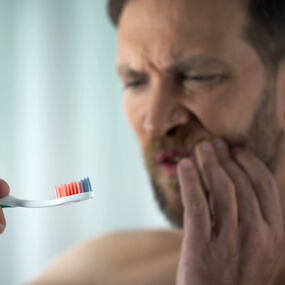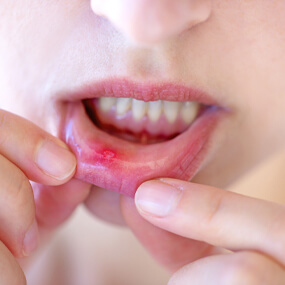How the Modern Toothbrush Came to Be

Toothbrushes are an invaluable tool that help us keep our teeth and gums free of plaque and thus avoid tooth decay and gum disease. The concept of a brush for teeth is not modern and can actually be traced back to ancient humans thousands of years ago. These devices have certainly been improved and refined over the years, and it is interesting to see just how that journey unfolded.
5000 B.C.
The Greeks and Romans of the Late Neolithic period made toothpicks from twigs in order to clean between the teeth. Ground bones and eggshells were used to make a paste that was rubbed on the teeth to clean them, and it was common to use tree bark and powdered charcoal as a bad breath cure.
3500 – 3000 B.C.
The predynastic ancient Egyptians are the earliest people known to use some form of a toothbrush. They used teeth cleaning twigs, which are often called chew sticks. The twigs were often chosen based on the aromatic nature of the tree in order to aid in breath freshening. As the twigs are chewed, fibers jut out and essentially serve as bristles, and a pointed end to the twig serves as a toothpick.
Chew sticks are still used today in various parts of Africa and the Middle East. These people use miswak sticks, which are taken from the Salvadora persica tree. The miswak is known to contain antibacterial properties that clean the teeth and may even inhibit plaque formation.
7th – 10th Century
The first known toothbrush to have bristles came from China and was made during the Tang Dynasty. Handles were made from bone or bamboo. The bristles were hog hairs, and it is believed that the bristles were purposefully sourced from northern hogs since they were thicker and stronger.
1223
It is known that at some point, the Chinese also used toothbrushes made from horsetail hair. The first evidence of this is the writings of a Japanese Buddhist monk living among monks in China.
15th – 17th Century
Travelers brought the concept of the bristled brush to Europe from China. The earliest evidence is the autobiography of Anthony Wood, an antiquary, in 1690 that mentions purchasing a toothbrush. The Europeans found hog bristles to be too stiff and tended to prefer horsehair instead.
1621
The Pilgrims who departed England and landed on Plymouth Rock in 1621 had no easy access to horsehair bristles. There is evidence that they used bones and feathers to scrape their teeth. There are also indications that salt was used to kill bacteria and remove buildup from the teeth. The Native Americans, on the other hand, used herbs like sage and tarragon, and some tribes were quite advanced and able to derive a paste from the local fauna that resembles modern-day toothpaste.
1700
Christoph von Hellwig was a City Official of Medical Health in Germany and is often regarded as the inventor of the modern toothbrush. He introduced his brush in Bad Tennstedt/Thuringia in 1700, and the town erected a statue in his honor that still stands today.
1728
Pierre Fauchard—a French doctor, often regarded as the father of modern dentistry—may have set the evolution of the toothbrush back a bit in 1728. He published a textbook for dentists that advised against horsehair because it was too soft and advised rubbing the teeth and gums with a sponge instead.
1780
The first mass-produced toothbrush is attributed to William Addis of the United Kingdom in 1780. What is interesting about Addis is that he had been jailed a decade earlier for inciting a riot. While in prison, they used rags with salt and soot to clean the teeth, but Addis deemed this ineffective. He had an idea, which he said came from watching other prisoners mop the floor. He created his toothbrush by saving a bone from a meal, manually drilling holes into it, tying bristles he had acquired from a guard through those holes, and sealing those holes with glue. This prototype served as the basis for his mass-produced toothbrush, and that company still sells 70 million toothbrushes a year in the United Kingdom.
19th Century
During the 1800s, mass-produced toothbrushes became commonplace and, in addition to Britain, were available in France, Germany, and Japan. Pig bristles were common in toothbrushes for the average person, and high-end toothbrushes during this period often contained badger hair.
The first toothbrush patent in the world was granted in the United States to Dr. H. N. Wadsworth in 1857. Dr. Meyer Rhein, a New York dentist, invented the first three-row bristle toothbrush in 1884, and toothbrushes became mass-produced for the first time in the U.S. in 1885 in Massachusetts.
1915
During World War I, the bone used to make toothbrush handles were in high demand in order to feed the troops, thus making it unavailable for constructing toothbrushes. This motivated manufacturers to use celluloid instead. This plastic was injected into molds to form handles, and toothbrushes made like this soon became the most popular kind.
1927
Many people think of the electric toothbrush as a very modern invention, but the first such product was created in 1927 and sold in the United States by the Electro Massage Tooth Brush Company.
1938
Wallace H. Carothers, a chemist, developed nylon for Du Pont, and this is arguably the most important development in the history of the toothbrush. This innovation is often associated with modernization in general and led not just to more affordable toothbrushes but nylon stockings and many other products.
1940s
Up until this point, silk thread was most commonly used to created toothbrush bristles. However, when the U.S. entered World War I in 1941, the silk it had was needed for parachutes and other war purposes. There was decreased supply as well, and the U.S. imported most of its silk. Nylon is often referred to as the fiber that won the war because it was used as a substitute for silk in many applications.
The lack of silk motivated toothbrush manufacturers to embrace nylon, and there were advantages as well. Production costs were lower, which allowed them to sell toothbrushes for less. In addition, the bristles were softer, and the manufacturers had much greater control over bristle texture.
Another interesting aspect of this time period is that brushing your teeth with a toothbrush was not nearly as common as it is today. However, the U.S. Army distributed these cheaper toothbrushes to its soldiers, and when the soldiers returned home, they brought their brushing habit with them.
1954
The Broxo Electric Toothbrush was developed in Switzerland in 1954. In the 1960s, E. R. Squibb would bring the product to the U.S. using the name Broxodent. The brand is still available today. While its claim as being the first electric toothbrush is technically untrue, the product was crucial to the success and evolution of electric toothbrushes in the U.S. and elsewhere in the world.
1977
Johnson and Johnson introduced the first toothbrush with an angled head. The angled head makes it easier to clean those hard-to-reach areas. It also had greater bristle density and outer bristles that were longer than the inner bristles, which are toothbrush characteristics that are still popular today.
1978
The first toothbrush with curved bristles was introduced. The Collis Curve toothbrush was invented by Dr. George C. Collis and designed to conform to teeth better in order to clean them more effectively.
1987
General Electric had changed electric toothbrushes fundamentally and made them more practical when it introduced a cordless rechargeable toothbrush in 1961. But it was not until the electric toothbrush by Interplax, with featured rotary action, in 1981 that electric toothbrushes became mainstream.
2000s
An annual survey of teenagers reveals the toothbrush to be the invention they cannot live without it. This means that it beats out smartphones, the Internet, and even automobiles.
Today
Most modern toothbrushes are still constructed with plastic handles and nylon bristles. The biggest difference is the sheer scope of products on the market. You can choose from many different characteristics in order to find the toothbrush that is most comfortable and effective for you.
Select and Maintain Your Toothbrush With Care
The history of the toothbrush is fascinating, and it is clear that humans have appreciated the value of cleaning their teeth for thousands of years. Jeffrey D. Clark, DDS, is a premier dentist in Scottsdale who recommends a soft-bristled brush and advocates replacing that brush every three months or as soon as the bristles fray. Dr. Clark also advises cleaning your brush before and after use and sanitizing it once a week. If you have any other toothbrush-related questions, your next regular cleaning and checkup at Scottsdale Cosmetic Dentistry Excellence is a great time to ask them. Call us at 480 585 1853 to schedule.




